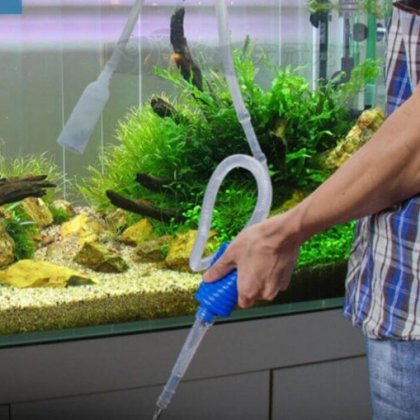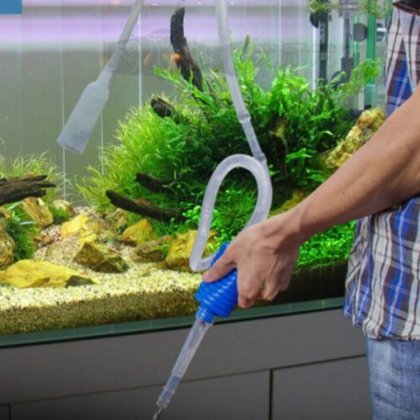Quick Facts :
Care Level:Easy
Temperament:Peaceful
Maximum Size:2"
Minimum Tank Size:10 Gallons
Water Conditions:72-77° F, KH 6-10, pH 6.0-6.5
Diet:Omnivore
Origin:Asia
Family:Cyprinidae
Species:Rasboras
Aquarium Type:Community
Harlequin Rasbora Aquarium Care, Feeding and Native Habitat Information
The Harlequin Rasbora is one of the more popular species of Rasbora found within the aquarium hobby. They are highly desirable additions to freshwater community aquariums as a group of Harlequin's have beautiful coloration and markings with a very docile disposition that makes them perfect tank mates for other small or medium sized community species. Harlequin's are easily recognizable due to their rich reddish-copper body and the distinctive black wedge marking on the rear half of their body. In the wild they will always be found in good sized schools, thus they should also be kept in groups within the aquarium environment as well. Keeping a group of 8 or more Harlequin Rasbora will make them feel much more safe and comfortable within the aquarium and will show off their markings as the group will have a much more striking appearance than a single individual. In the wild Harlequin Rasbora are found living in tropical lowland waterways throughout southeastern Asia. Their natural habitat is very heavily populated with dense vegetation and maintains tropical temperatures of 73 to 79 F (22 -26 C) throughout the year.
Harlequin Rasbora are considered an easy species to keep within a community aquarium. They will do best in setups that resemble their natural habitat and that have consistent water parameters. Harlequins should be kept in schools of 8 or more individuals in aquariums that have plenty of plants and driftwood along with stable water conditions that include temperatures in the mid to upper 70's and ph in the range of 6.0 to 6.5. They should also be kept with other similarly sized peaceful fish species or with docile medium sized fish species. If they are kept with more boisterous species like barbs, sharks or angelfish, it is best to provide them a habitat with plenty of plants so that they can retreat to safer areas of the aquarium when they feel threatened or if picked on. Harlequins themselves will not nip at or bother other fish or invertebrate species and are considered good tank mates for even the most sensitive fish species.
Harlequin Rasboras are generally considered difficult to breed, but have been breed by advanced aquarists and some professional breeders. Their willingness to breed is very dependent on their environment and the age of the breeding specimens. They should be housed in an aquarium with plenty of broad leafed plants with a stable water temperature between 76 and 79 degrees F, along with an acidic soft water with a ph of 6.0 to 6.3. Within these conditions the aquarist should introduce a small group of 2 or 3 young females (9 to 12 months of age) along with a more mature male (approx. 2 years of age). The newly introduced breeding group should be fed live foods while in the breeding aquarium. Breeding typically takes place in the early morning hours and consists of the male of the species trembling near or rubbing up against the females in order to try and induce them to spawn. If interested the female will rub her underside against the underside of a broad leaf and encourage the male to join her there to fertilize the eggs. The fertilized eggs will adhere to the bottom of the leaf where they will stay until they hatch in about 24 hours. After the eggs are laid, the parents should be removed from the aquarium and the lights should be kept dim until 24 to 48 hours after the eggs have hatched. Like all small fry, the babies should be kept with a small bubble filter that will oxygenate and keep the water filtered, while also keeping the water from stagnating. The babies should be fed small foods like infusoria and then gradually moved to larger foodstuffs over the course o the next 6 to 8 weeks.
Harlequin Rasbora are very easy to feed as they will readily consume a wide variety of meaty and vegetable based foods. They will do well with a varied diet consisting of flake foods, small pellets, freeze-dried bloodworms or tubifex worms and other similar preparations.
No reviews found!

































No comments found for this product. Be the first to comment!